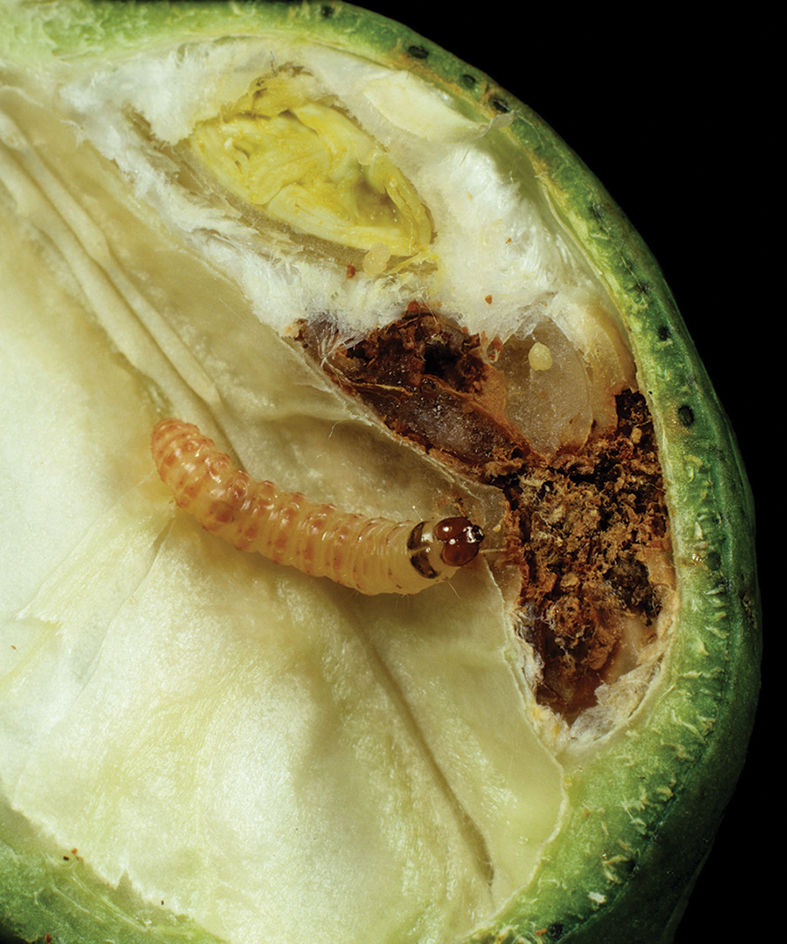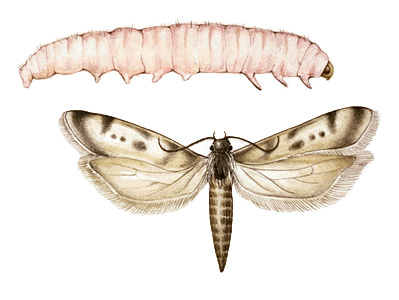Pink bollworm is an insect that attacks cotton plants in many parts of the world. The feeding of this insect reduces the yield and quality of cotton lint and the oil content of the seeds. Experts believe the pink bollworm was imported from Egypt into Mexico in 1911 in shipments of cotton seed. The insect was first discovered in the United States in Texas in 1917. Large sums of money have been spent in an effort to kill the pink bollworm in the United States.

The adult is a small grayish-brown moth, with a wingspread of about 3/5 inch (15 millimeters). The larvae (young) are about 1/2 inch (13 millimeters) long. The female moth lays eggs on all parts of the cotton plant. After the larvae hatch, they feed on the pollen and fleshy parts of the flower. The infested flowers do not open normally, and many fall off. Later, the larvae enter the growing cotton bolls, eat the seeds, burrow through the lint, and interfere with the growth of the bolls. This damage causes the cotton to rot.
In spring and summer, the larvae mature in 8 to 16 days. Those hatched in fall and winter may remain as larvae from a few months to two years or more. When the summer larvae are grown, they leave the bolls. They spend the third, or pupal, stage of their lives about 3 inches (8 centimeters) underground or under decaying leaves or other organic matter at the soil surface. The pupal period lasts from 6 to 20 days. The resting larvae mature in the ground or in the seed and lint inside the boll. The insect may be easily carried to any distance while in this resting larval stage. Breeding begins early in spring and continues until frost, with several generations produced in a season.

